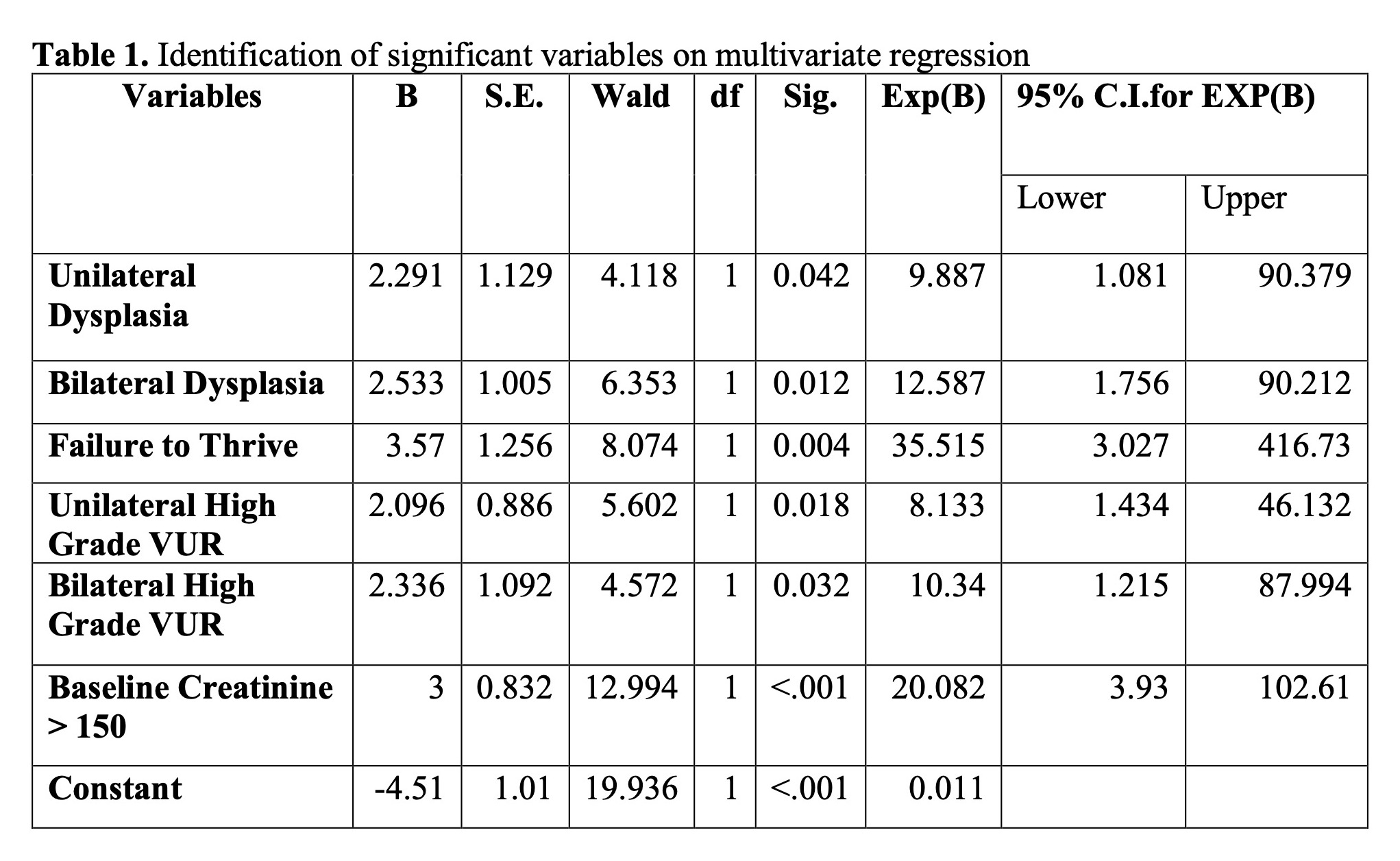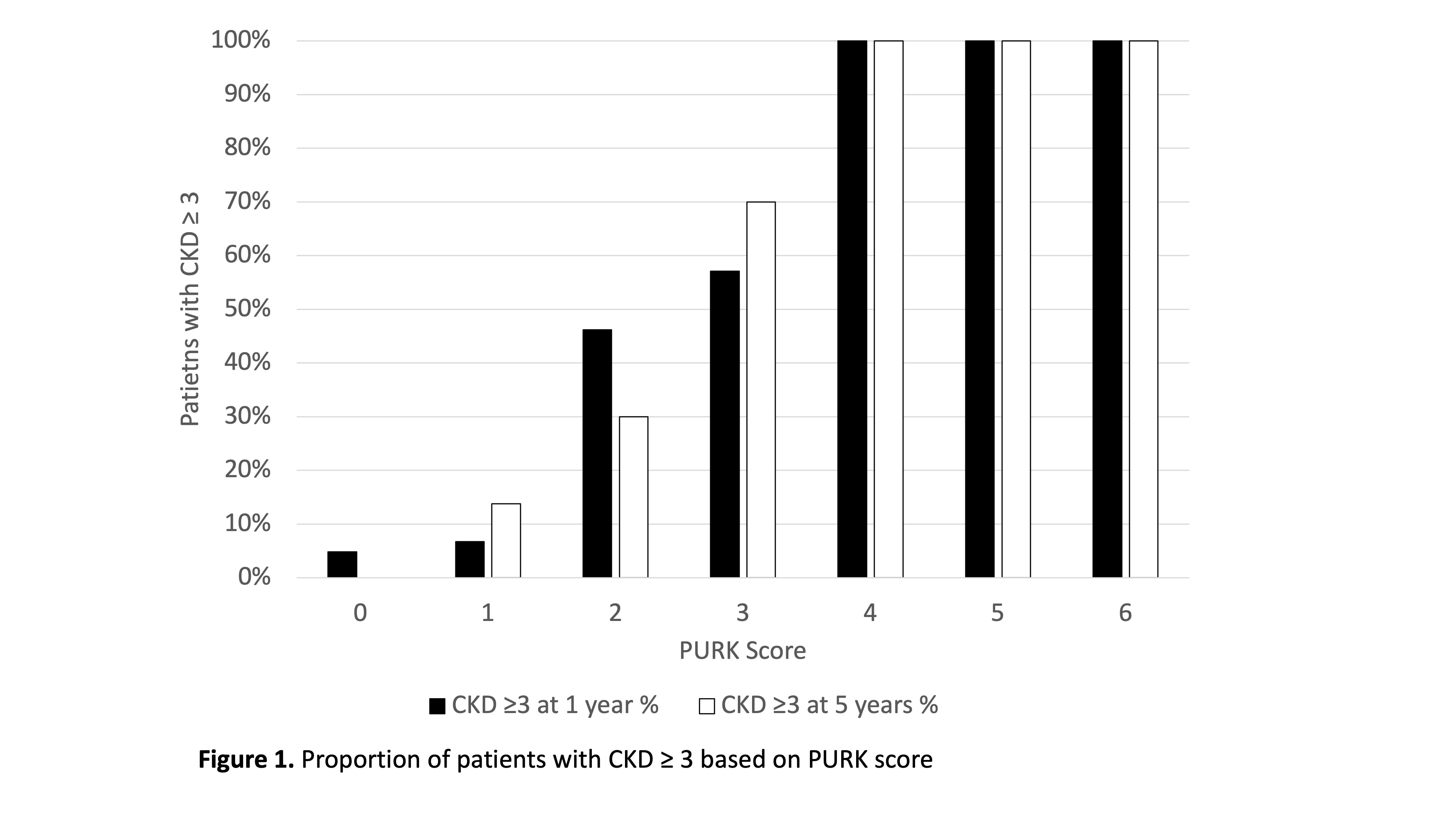Posterior urethral valve risk of chronic kidney disease (PURK) score: a novel prognostic scoring system using post-natal presentation variables in boys with posterior urethral valves
Jin Kyu Kim, MD1, Priyank Yadav, MD2, Adree Khondker, BHSc1, Michael Chua, MD, MASc1, Mohd Sualeh Ansari, MD2, Juliane Richter, MD1, Joana Dos Santos, MD, MHSc1, Armando Lorenzo, MD, MSc1, Mandy Rickard, MN-NP1.
1The Hospital for Sick Children, Toronto, ON, Canada, 2Sanjay Gandhi Postgraduate Institute of Medical Sciences, Lucknow, India.
BACKGROUND: Posterior urethral valves (PUV) are the most common etiology for congenital urethral obstruction and many progress to CKD. We aim to develop a scoring system using clinical variables at presentation to identify risk categories to individualize follow up and upper/lower urinary tract optimization.
Methods: Patients who presented with posterior urethral valves diagnosed prior to June 2022 from institution 1 and diagnosed prior to 2013 from institution 2 were included. The outcomes were eGFR at 1 and 5 year endpoints. We performed univariate analysis to determine potential predictors of CKD stage ≥3 at 5-years (defined as p≤0.1). Once potential predictors were identified, backward logistic regression analysis was used to identify predictors that significantly affected the model estimates. Based on the ß value of the significant variables in the logistic regression, a scoring system was developed. The scoring system was evaluated using the area under operating characteristics curve (AUROC).
Results: A total of 120 and 11 patients who had first presentation at less than 1-year of age with follow up data beyond 5 years of age were identified from institution 1 and 2, respectively. 117 patients had 1-year eGFR data and 81 patients had 5-year eGFR data. On univariate analysis, potential predictors of CKD stage ≥3 at 5-years were: high grade VUR (p=0.077), baseline creatinine (p<0.001), FTT (p<0.001), and presence of dysplasia on US (p=0.002) to be significantly associated with CKD stage ≥3 for 5-year follow up. Using backward logistic regression analysis, the variables that both significantly affected the model estimates and predicted the likelihood of CKD stage ≥3 at 5 years were: baseline Cr >150, dysplasia on ultrasound, FTT, high grade VUR (Table 1). Based on the ß value of the significant variables, a scoring system - Posterior Urethral valve Risk of Kidney disease score (PURK score). Variables with ß values ≥3 were given a score of 2 and those with ß values <3 were given a score of 1. The PURK score, graded out of 6, risk-stratified patients at risk of CKD stage ≥ 3 at 1-year and 5-years of follow up (Figure 1; Table 2). The model had excellent AUROCs of 0.900 for 1-year prediction and 0.900 for 5-year prediction (Figure 2).
CONCLUSIONS:
PURK score developed and validated from two institutions provides accurate stratification of patients who are at risk of CKD stage ≥3. Further multi-institutional evaluation is required for routine use in clinical promise. 



Back to 2023 Abstracts
